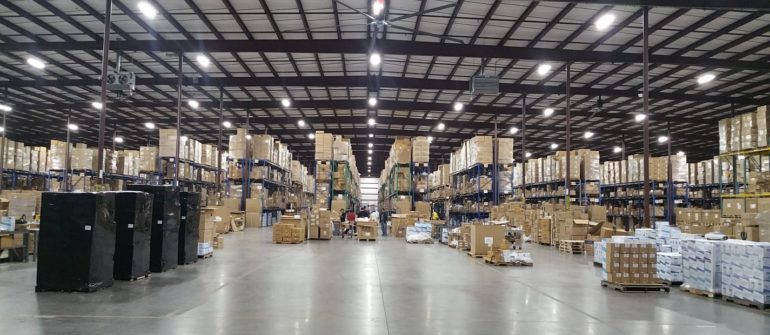E-commerce is on the rise and only gaining momentum. According to a report by eMarketer Retail, in 2017, retail e-commerce sales worldwide reached $2.3 trillion, a 25% increase over the previous year.
Besides discounts on products and the availability of tools for comparing product features and prices, what has really helped boost e-commerce, is the convenience of quick delivery. This adds to the purchase experience that is vital for sustaining customers over the long term. This is possible only when retail operations are driven by technology integration and automation, across its entire supply chain.
However, some e-tailers are still hesitant about automation especially in warehouse functions. In some countries where labor is cheap, some businesses may prefer to hire manual labor for their sortation and distribution. The need for the implementation of robotics and AI-based solutions in the supply chain is often ignored.
The picture is dramatically different in developed countries where labor is expensive. Since warehouses constitute about 30% of the supply chain function, e-tailers need to realize the huge advantage that comes with upgrading their warehouses with some degree of automation, in order to deliver accurate orders to more shoppers, faster.
The addition of new automation equipment will help e-tailers keep up with the evolving distribution challenges and consumer demands of same and next-day delivery. It also increases the efficiency and accuracy of various warehouse operations and processes, leading to increased inventory visibility, fewer out-of-stock situations, and a minimal loss in sales and returns.
Here are the top 5 benefits e-tailers should definitely know about supply chain automation, especially in e-commerce.
1. Same headcount with increased throughput. A common myth associated with automation and robotics is that they will ‘replace’ people. However, that is not entirely true. While automation could take over several repetitive and monotonous tasks, the main objective of adopting advanced technology is the benefit of increased efficiency within in-house operations and processes. In addition, outstanding levels of throughput can be achieved. Collaborative robots or cobots working alongside humans to manage higher number of orders will achieve better results. Furthermore, AI-enabled robots make sure packages are shipped in time with higher accuracy.
2. Reduced operation costs. With its real-time intelligent decisions that are driven by ever-changing supply chain dynamics, warehouse robotics systems ensure that they pick and consolidate multiple orders efficiently, and these reach the consumers within the expected timeframe. Capable of operating 24×7, this adds to improved productivity, less returns, and minimal loss of sales. All this will positively impact the overall cost of operations and the profitability of the business. With the help of AI-driven algorithms, warehouse robotics can effectively support e-commerce, third-party logistics, retail stores and production floors, and help increase cost savings.
3. Accurate and more orders. Warehouse robotics result in faster and more accurate order fulfilment, decrease order-to-pick time, and increase the number of orders processed overall. Advanced AI-powered automation systems can adapt seamlessly and quickly to changing inventory profiles, demand patterns and peaks, resulting in minimum downtime.
4. Improved space utilization. Autonomous Mobile Robots (AMR) used in warehouses are capable of handling multi-deep storage where racks can be placed next to each other without requiring aisle spaces in between. Such smart technology for space-saving allocation of the racks enhances storage density. Moreover, some robotics systems are capable of taking a lift on their own, which ensures better use of storage vertically across a multi-floor warehouse. In-built software in the mobile robots can leverage artificial intelligence and machine learning to optimize large and complex operations, and to adapt to fast changing business demands. A future-ready warehouse is capable of handling the evolving demands of its supply chain.
5. High potential of omnichannel retailing. Omnichannel retailing is a multichannel approach to e-commerce where customers enjoy a seamless experience across all shopping mediums; perhaps starting from mobile-browsing, purchasing from an e-commerce marketplace or visiting a store, phoning in an order, to receiving the order at home or collecting it from a store, to making a return at another store or phoning the call center for an exchange. All these add to the complications of managing and delivering a good experience for every consumer. The simple and new ways of shopping have resulted in consumers buying a few items at a time, though buying more often, sometimes on a daily basis.
Modern industrial robots used in warehouses are powered by AI that manage material flow, and deliver the flexibility, visibility, and actionable insights required to optimize the supply chain for omnichannel distribution, thereby providing a unified and satisfying shopping experience to consumers.
Source: https://www.inboundlogistics.com/cms/article/automation-is-the-game-changer-for-etailers/
